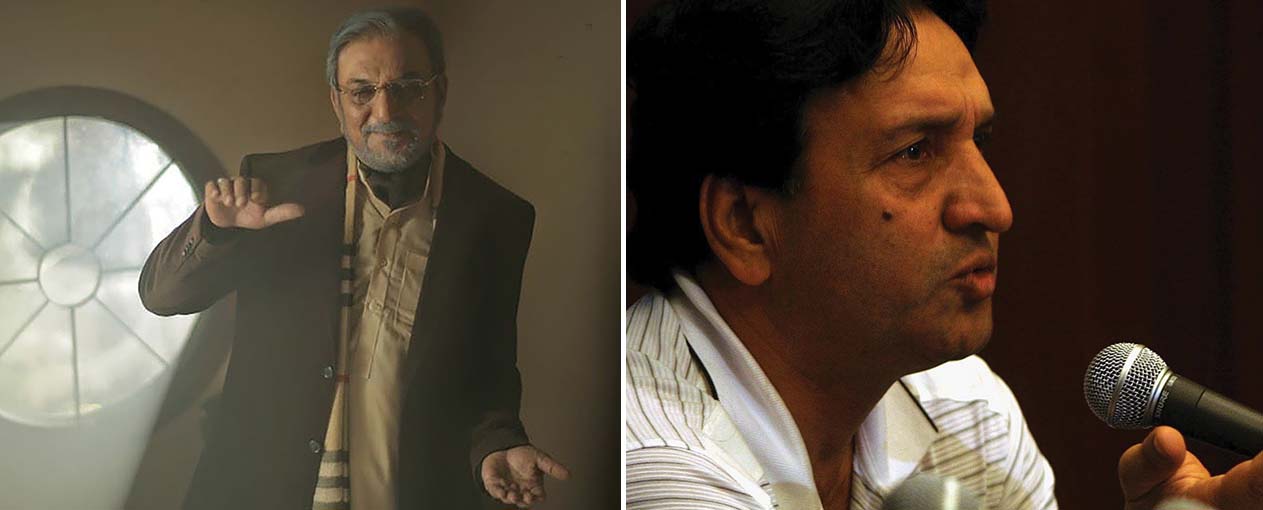Abid Ali (29th March 1952 – 5 September, 2019)
The Veteran actor, director and producer, best known for his role as Dilawar Khan in the PTV classic drama Waris back in 1979 is no more with us. The tragic loss to the industry is mourned by all.
Abid Ali was a legend and an asset for our country having vast experience of working in different mediums of acting theater, film and television. Abid Ali played many memorable roles and directed/produced quite a few quality dramas in a career spanning over four decades.
Born and educated in Quetta, Abid Ali was attracted to the arts from early age, writing stories and painting in his childhood and teenage years, and first entered Radio Pakistan before going to Lahore after some struggle and launching his successful TV career with PTV’s drama serial Jhok Sial in 1973.
He launched himself as a director and producer with the 1993-hit drama Dasht, also the first private production for Pakistan, while the same year, for PTV this time, he directed the drama Doosra Aasman, the first drama shot abroad, followed by other projects for many channels, including Saheli in 2007, or Massi aur Malka, a family based-drama, in 2009, usually acting in these serials as well.
Abid Ali also acted in films and did some memorable roles. Two of the films were Insaniat Ke Dushman (1987) and Khaak Aur Khoon (1979); the latter was based on a Nasim Hijazi novel.
In 1989, television entered a new era when first private terrestrial channel NTM (Network Television Marketing) was launched thus ending monopoly of PTV over television transmission. NTM encouraged many independent producers to make dramas which introduced television audience to new subjects which otherwise were restricted on PTV. Abid Ali is a prominent name, who invested in infant private drama productions to strengthen its future. Abid Ali produced many successful dramas like Dooriyan(1991), Dasht(1994), Doosra Aasman (1997),Pinjra (1999), Hawa Pe Raqs (2002) most of which were successful.
Abid Ali experimented with new subjects and ideas in all these dramas. Dooriyan was based on a novel of Sidney Sheldon, Dasht was the story of a tribal environment in Balochistan, while Doosra Aasman was first Pakistani drama shot in UAE, which was based on Pakistani expatriates in UAE. Similarly Hawa Pe Raqs was story covering the circus workers. Abid also introduced many new faces through his productions like Atiqa Odho, Asad Malik in Dasht, Nida Mumtaz in Dooriyan, Iman Ali, Zeeshan Sikandar in Pinjra and Moammer Rana in Hawa Pe Raqs. Abid also starred in all these dramas in character roles performing memorable roles of his career.
He will be dearly missed by all.




The Legend that Abdul Qadir was (September 15, 1955 – September 6, 2019)
Cricket has Abdul Qadir to thank for keeping wrist-spin alive through the darkest years of the late 1970s and ’80s. He did it with style, too. Blessed with a fast bowler’s temperament and fire, he surrounded his craft with mystique. Before the 1982 tour to England, captain Imran Khan asked him to grow a French beard to enhance the aura and it worked: England were his favourite victims through his career, responsible for his international breakthrough in 1977-78 as well as his finest hours, at the Oval in 1987 and the home series later that year (he took 30 wickets in three Tests, including the best bowling in an innings by a Pakistani, 9 for 56 in Lahore). Imran was to be a key influence on his career, one of the few capable of getting the best out of Qadir the man and bowler.
Qadir’s action was a wonderfully extravagant routine, and he admitted more than once that it was contrived as a spectacle to distract batsmen. Variety was the key; it was said he had six different deliveries per over. Like the Andy Roberts bouncer, Qadir was said to have two different googlies. The flipper was often equally lethal though much often depended not on his ability but on mood.
Qadir’s appetite for the fight could not be questioned and it often came out in his batting. He played a few combative Test innings and some vital ODI ones, once taking 16 off Courtney Walsh’s last over to win a World Cup tie. He faded away from the scene, however, in the early 90s with the emergence of Mushtaq Ahmed and played his last ODI in 1993. Since then he has run a private academy near Gaddafi Stadium in Lahore and his four sons have followed him into the game, with varying degrees of success, but his role in Mushtaq’s rise and, to a lesser extent, that of Danish Kaneria should not be overlooked. In November 2008 Qadir was given licence to contribute more directly once again to Pakistan cricket when he was appointed the chief selector, but he resigned after a little over six months in the job.
It is impossible to believe that wrist-spin has ever been bowled better than Qadir did in his home city of Lahore in 1987-88, when he took 9 for 56 against England. Graham Gooch, who faced him that day, said Qadir was even finer than Shane Warne, to whom he passed on the candle.
Qadir played 209 first-class matches and took 960 wickets with an average of 23.24. His best bowling figures for an innings were nine wickets for 56 runs, whereas his best performance for a match was 13 wickets for 101 runs. As a batsman, he scored 3,740 runs averaged 18.33 from 247 innings. He also scored two centuries and eight fifties. Qadir’s highest score in the format was 112 runs.
The world of cricket in general and the world at large mourn the demise of a fine cricketer as Qadir Khan.

